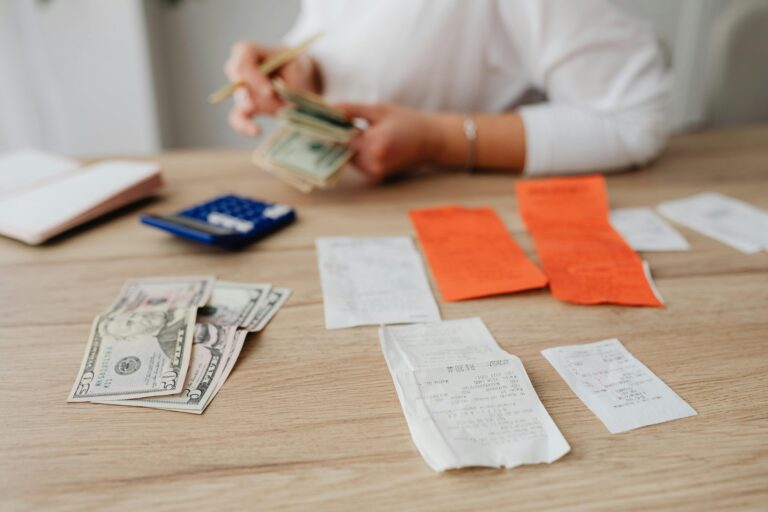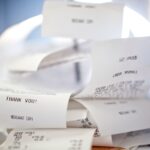Don’t Let “Naked” Expenses Cost You During an IRS Audit
When it comes to IRS audits, one of the most common reasons taxpayers lose out on deductions is simple but avoidable: lack of documentation. You might think that a bank or credit card statement is enough to prove business expenses, but the IRS sees it differently. These statements only show that you spent money, not what you spent it on. Without a supporting receipt or invoice, that transaction is considered a “naked” expense. And during an audit, naked expenses are almost always denied.
To protect your business-related deductions, (especially for meals, travel, vehicle use, and client gifts) you need to go beyond bank records. The IRS requires documentation of five key details for each deductible expense:
- The date of the purchase
- The amount paid
- The place where the purchase occurred
- The business purpose of the expense
- The business relationship (for meals, entertainment, or gifts)
Receipts and invoices are the gold standard for meeting this requirement. But let’s be honest: paper receipts get lost, crumpled, and worst of all, they fade. Especially those printed on thermal paper.
The good news? Capturing and storing receipts is not the obnoxious task it used to be. With your smartphone, you can snap a quick photo of your receipt and store it digitally. Apps like Expensify or Zoho Expense allow you to not only upload receipts but also categorize expenses, attach notes, and even sync with accounting software such as QuickBooks or Wave.
Going digital has real advantages:
- Accessibility: Receipts are searchable and available anytime.
- Backup: Cloud storage protects you from loss or damage.
- Efficiency: At tax time, everything is already organized and ready.
For example, let’s say you take a client out to lunch to discuss a new project and you pay with your business credit card. Great! But in order to make that meal deductible, you’ll also need a receipt that shows where the lunch happened, how much it cost, and a quick note that it was a business meeting with Client X to discuss Project Y. Apps that let you capture this info with the image make the process smoother.
Taking just a moment to scan or photograph a receipt may seem a bit tedious in the moment, but it can save you hours of stress, and possibly hundreds or thousands in lost deductions if you’re ever audited.
Remember: in the eyes of the IRS, if it’s not documented, it didn’t happen. So don’t let naked expenses leave you exposed. Go digital, stay organized, and keep your deductions safe!
Related Posts on Redmond Accounting CA
-
Tracking Business Expenses: Why You Can’t Afford to Be LaxTracking Business Expenses: Why You Can’t Afford to Be Lax Tracking business expenses is often the last thing small business owners want to do. We see it all of the time: You’re making sales, revenue is up and while you used to monitor every dime that you spent when first opening your doors, you now take a lax approach to…
-
2024 IRS Numbers2024 IRS Numbers Every year the IRS comes out with updated numbers. Rather than having you sift through all of them, we have put together a blog that details out a few numbers you should be aware of. Here are the updated 2024 IRS numbers. Personal Tax Changes The standard deduction deduction is $14,600 for Single filers and is $29,200…
-
How to Properly Record Your Technology ExpensesTechnology Expenses 101: How to Record Cloud Storage, Server Costs & More Tracking technology expenses can be tricky for any business, but for SaaS and tech companies in general, it can be even more challenging. In addition to the tech costs associated with the creation and delivery of your products and service, you must also consider your own tech expenses.…
-
Open for BusinessOpen for Business RAI presents Finance 101 at Square's "Open for Business: Celebrating Women Entrepreneurs" even in SF. On International Women’s Day, the world will celebrate the accomplishments of inspiring women around the globe. On March 10th, Square wants to celebrate you -- amazing women entrepreneurs and business owners in our community. We'll start the evening off with a talk…
-
Is Expensify Right for My Business?Is Expensify Right for My Business? All business owners and bookkeepers know the headache of sorting through receipts and the nightmare that expense tracking can create. Creating expense reports takes a lot of time and, if not done right, can cause expensive mistakes. Time is money. Consider the time it takes an employee to submit expense reports. That is time…
-
IRS Mileage Rate Changes for 2023IRS Mileage Rate Changes for 2023 The IRS has published the official 2023 rates for reimbursable and deductible mileage, and many will be happy to know the rate per mile for business-related trips has been increased. Beginning on January 1, 2023, the standard mileage rates for the use of a car (also vans, pickups or panel trucks) will be: 65.5…
-
Expensify vs QuickBooks: Which is Right for Your Business?Expensify vs QuickBooks: Which is Right for Your Business? Expensify and QuickBooks are two popular accounting-related software solutions for businesses. Both allow companies to track employee expenses, but they differ in their overall capabilities. If you’re considering Expensify or QuickBooks for your company, it’s important to understand how each solution works so that you can make an informed purchasing decision.…
-
Bill.com, a Cornerstone of Our BusinessBill.com, a Cornerstone of Our Business We at Redmond have been using Bill.com for a decade. It is an intelligent way to create and pay bills. And it is truly a cornerstone of our business. It exemplifies the modern methods of accounting that we evangelize - from security to automation to electronic payments to online access. In December, we were…
-
How LivePlan Helps Business OwnersHow LivePlan Helps Business Owners Every small business begins with an idea. As the ball gets rolling, most entrepreneurs realize that coming up with the idea was the easy part. Writing a business plan, pitching to investors, and figuring out every little detail that comes with starting a small business quickly becomes a much larger challenge. That’s where LivePlan and other business…









